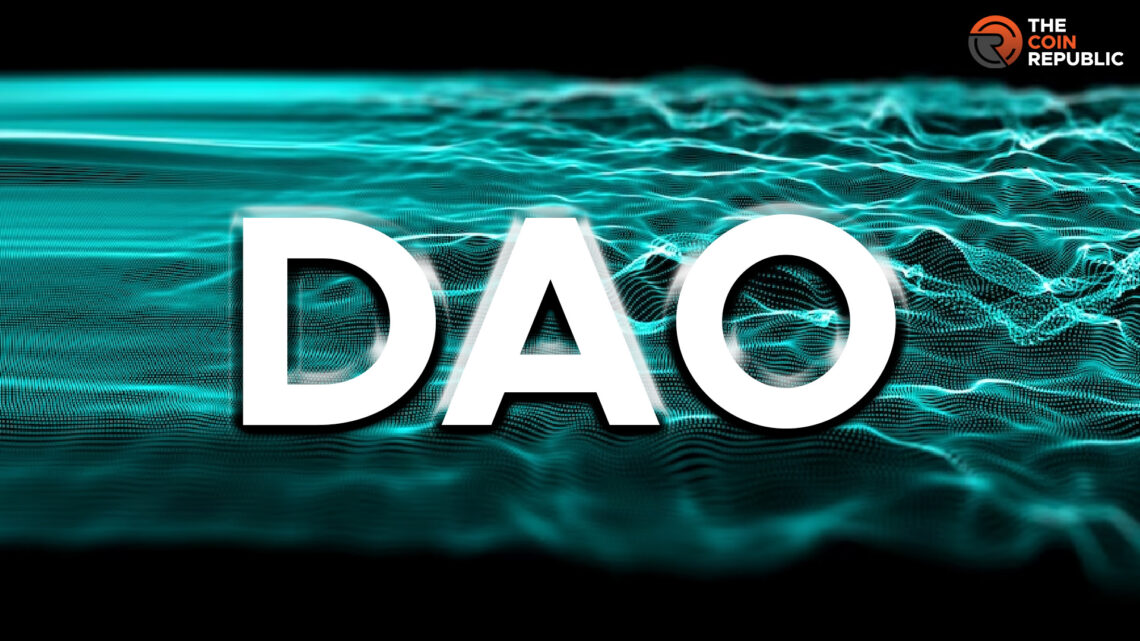- 1 Decentralized Autonomous Organizations have emerged as the governance mechanism for businesses.
- 2 It allows enterprises to streamline their operations on many fronts using smart contracts.
- 3 The mechanism establishes a reliable ecosystem in which everyone gets equal rights to information.
The world got familiar with the concept of decentralization with Bitcoin. It’s the base of every cryptocurrency and its functionality. Today, decentralization itself has become an adaptable mechanism for businesses. Decentralized Autonomous Organization (DAO) has established itself as an important concept in the market. To know it better, one must dive deeper into its workings and concepts.
DAO: In a Nutshell
Decentralized Autonomous Organizations (DAOs) are self-governed and self-regulated groups. They run on blockchain and keep all the information on the open-source shared network. For business owners and stockholders, this system has great significance. It is because it brings transparency and better security. It also rules out any chances of fraudulent activities and unfair practices.
However, shared business structures aren’t entirely a new concept. Markets have actually tried them, but they couldn’t be useful because of centralization. With DAO, the scope of centralization ceases altogether. No single entity or person can have more dominance than the others in it. In fact, the network ensures that every single member has the same privileges.
How Do DAOs Work?
DAOs focus on automation and to determine that they totally eliminate third-party involvement. In order to join this network, users must buy the network’s native tokens. Some examples of DAOs are Decentraland, Bitshares, MakerDAO, Augur, and DASH. They use smart contracts to implement the organizations’ rules.
The core development team creates these contracts and applies them to the network. With these digital agreements, the company makes the operations auditable too. They essentially lay the groundwork for the DAO’s operations. Furthermore, they let any network member look into the protocols working at their will.
It goes beyond determining the fundamentals and figures out the financing structure too. It gives explicit instructions on how to go about funding and investments. To accomplish that, it makes use of a token issuance method. Under that, protocol sells tokens and pads up the company’s coffer. Moreover, it entitles the token holders to receive voting rights in lieu of assets.
Once the funding is finished, the development team deploys the DAO. Mostly, developers use “Solidity” programming language to create DAO code. The next thing one needs to know about this network is its types.
Types of DAO To Know About:
- Protocol DAOs: They represent a voting metric that handles the DAO.
- Collectors DAOs: They use NFTs and focus on establishing ownership.
- Operating System: Standalone platforms use this mechanism to create the mechanism.
- Service DAOs: They offer acquisition and talent-hunting models to businesses.
- Grant DAOs: Communities use it for pooling funds and voting purposes.
- Entertainment DAOs: They bring innovation with control and personalization.
- Media DAOs: They give direct contribution rights to content owners.
- Social DAOs: They make the collaboration of different apps easy for social media platforms.
Conclusion
Surprisingly, it’s not very costly to set up a DAO for a company. With easy and affordable development, it becomes the go-to governance setting for any business. At the same time, it brings more scalability and heightened security. Due to all these benefits, this platform is gaining popularity and it will most probably continue that streak for a long time.

With a background in journalism, Ritika Sharma has worked with many reputed media firms focusing on general news such as politics and crime. She joined The Coin Republic as a reporter for crypto, and found a great passion for cryptocurrency, Web3, NFTs and other digital assets. She spends a lot of time researching and delving deeper into these concepts around the clock, and is a strong advocate for women in STEM.


 Home
Home News
News






